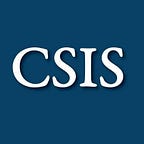Critical Questions Following Suspected Chemical Attacks in Syria
April 12, 2018
Adapted from the work of Rebecca Hersman and Melissa Dalton, CSIS: cs.is/2ILjX8y
Subscribe to our daily newsletter, The Evening, a daily brief on the news, events, and people shaping the world of international affairs.
On April 7, 2018, a suspected chemical weapons (CW) attack in opposition-held Douma, Syria, left dozens dead and sickened hundreds more. While horrific images coming from the Douma attack have seized the world’s attention, chemical weapons have been used more than 20 times since last year’s missile strike and at least 8 times just since the beginning of 2018. The Bashar al-Assad regime uses chemical weapons because the benefits for use outweigh the cost. The only way to make CW use stop is to change that calculus.
Q1: Chemical weapons use has continued in Syria despite last year’s U.S. cruise missile strike on a Syrian air base. Why is this happening?
A1: This latest attack fits a repeated pattern. When the international community, particularly the United States, seems distracted or indicates its intent to pull back, the Syrian regime feels emboldened to seek battlefield gains through chemical attacks. Why does the Assad regime do this? Because it works. It is a deliberate move by the regime to coerce and depopulate opposition-controlled areas, along with industrial-scale conventional force against Syrian civilians. By targeting the Douma suburb outside of Damascus, Assad is eliminating a near threat to the capital and sending a signal to other remaining opposition-held pockets that they are next.
Q2: What options does the United States have to respond to the reported April 7 attack in Douma?
A2: Going forward, it will important that not only the Syrian regime, but also its enablers, face costs for the continued use of chemical weapons. The United States and other members of the Security Council must continue to push for action within the Council and hold Russia to account for shielding Assad’s atrocities.The United States should also work with like-minded nations to leverage a new multilateral mechanism for addressing such use. These partners can press for institutional reforms and mechanisms that will improve the speed and quality of international responses in the event of future attacks, in Syria and beyond.
Q3: What are the implications for U.S. strategy?
A3: The United States and its allies and partners need to take a comprehensive approach to the crisis in Syria. The United States and its international partners should broaden the menu of military, diplomatic, economic, and judicial response options to ensure that every chemical weapons attack is met with a cost-imposing response that is also still proportional and consistent with its overall strategic aims. The end goal should be deterring and pressing Assad (and his supporters) to end the deliberate targeting of civilians and agree to a negotiated political settlement to the civil war.
The Syrian conflict proves time and time again to be uncontainable in destabilizing the region and shredding normative frameworks for the use of force. It is the arena in which U.S. adversaries are testing deterrence, competition, and the bedrock normative frameworks that undergird U.S. and international security. If the United States wants to lead and compete in this environment, it must adopt a comprehensive approach to Syria and reinforce accountability mechanisms and normative underpinnings for the use of force. Certainly, after seven years, with 500,000 dead and millions displaced, Syrian civilians deserve no less.
Adapted from the work of Rebecca Hersman and Melissa Dalton, CSIS: cs.is/2ILjX8y
Subscribe to our daily newsletter, The Evening, a daily brief on the news, events, and people shaping the world of international affairs.
